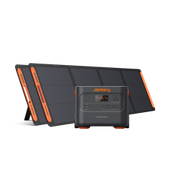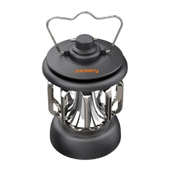How Many Watts Does A Light Bulb Use
Light bulbs are an indispensable part of our households. The construction of our spaces now needs lighting, even during the day sometimes. Since it is a frequently used device, we should know how many watts a light bulb uses and how much it costs. Incandescent light bulbs consume about 60 watts, while average LED light bulbs use about 10 watts. We will also explore the difference between incandescent bulbs and LED bulbs. How much energy they use and how to cut the cost of light bulbs.

Key Takeaways About Light Bulb Wattage
- How many watts does an incandescent light bulb use? It consumes about 60 watts.
- LED light bulbs use much less electricity than the incandescent light bulb, and its usage is about 10 watts.
- Using an incandescent light bulb for 4 hours a day will consume 480 watts daily and use about 14.4 kilowatt-hours of electricity per month.
- On the other hand, an LED light bulb used for 4 hours a day will use about 40 watts a day, 2 kilowatt-hours of electricity per month.
- Using solar energy is the best way to reduce energy costs while using light bulbs. However, it is essential to know how many watts a light bulb use and how many bulbs you need to understand the power requirements clearly.
How Many Watts Does A Light Bulb Use?
How many watts a light bulb uses depends on the bulb's type, how long it is used, and the light bulb's wattage. There are three types of bulbs used in the market.
Incandescent bulbs
Incandescent bulbs are the most expensive light bulbs in terms of electricity usage. These old-fashioned bulbs need to be more efficient, and thus we do not see them used frequently. Incandescent bulbs might use 60, 70, or even 100 watts. A 100 watts bulb will consume about 876 kWh of energy a year.
Compact fluorescent light bulbs
Compact fluorescent light bulbs, or CFLs, are spiral light bulbs that are better than incandescent bulbs in efficiency. These bulbs use about 25 watts to produce the same lighting effect as a 100 watts incandescent bulb. It accumulates 216 kWh of energy a year.
LED bulbs
LED stands for “Light emitting diodes”. These are the most efficient light bulbs. How many watts does a light bulb use? An LED bulb uses only 10 watts on average. It makes about 14.4 kWh a year.
Definition Of Amps, Volts, Watts, Kilowatt-Hours
- Volts (V): a measure of voltage, i.e., the speed of electricity passing through a device or a circuit.
- Amps (A): Amps or amperes measure the electric current, the number of electrons flowing through a circuit.
- Watts (W): Watts measure the energy consumption, calculated by multiplying volts x amps.
- Kilowatt-hours (kWh): Kilowatt-hours is the energy consumption in time. This unit is used to calculate your electricity cost.
Light Bulb Watts Consumption Of Incandescent, LED, Compact Fluorescent Light Bulbs, And More
Every type of light bulb has different wattage ratings. For example, incandescent light bulbs may use 100 or 60 watts. Similarly, compact fluorescent bulbs consume 25 watts, and LED bulbs are available in 10 watts, 16 watts, and 13 watts.
|
Light Bulb |
Wattage |
Estimated Working Hours (Hours) |
Estimated Power Needed daily (Watt-hours) |
|
Incandescent Light Bulb |
100 |
4 |
400 |
|
60 |
4 |
240 |
|
|
Compact Fluorescent Bulbs |
25 |
4 |
100 |
|
LED Light Bulb |
10 |
4 |
40 |
|
13 |
4 |
52 |
|
|
16 |
4 |
64 |
Estimate Your Light Bulb Energy Consumption
How many watts a light bulb use depends on three main factors. These factors are the Power, the hours, and usage duration. Suppose you have a 60 watts incandescent bulb that you use for 4 hours a day. Let us calculate the estimation of your light bulb.
Energy consumption = watts x usage duration
Energy consumption = 60 x 4
Energy consumption = 240 watt-hours = 0.24 kilowatt-hours
Monthly energy consumption = energy consumption daily x 30
Monthly energy consumption = 0.24 x 30
Monthly energy consumption = 7.2 kilowatt-hours
Yearly energy consumption = monthly consumption x 12
Yearly energy consumption = 7.2 x 12
Yearly energy consumption = 86.4 kilowatt-hours
What Size Power Station Do I Need For a Light Bulb When Off Grid
Solar generators are the best alternative power solution. Using a portable power station has many benefits, including;
- Solar generators are lightweight and compact; you can easily take them while traveling. Since they occupy significantly less space, you can quickly put them into your camping van, kayak, or camp.
- Nature lovers prefer solar generators because they are environment friendly, do not use any fossil fuels, and have significantly less carbon footprint.
- These generators are also noise-free and fumes-free, so they don't disturb the peace of your off-grid setup.
- Solar generators are safe and reliable.
A solar power generator or a solar power station is the best way to power your lights, phone chargers, fans, GPS, laptops, refrigerators, cooking grills, etc. Though the lighting is not a big power eater compared to big appliances, we will still need to know how many watts a light bulb uses to decide the size of the required solar generator. Jackery portable power stations are available in a wide range of capacities. The best option for light bulbs is Jackery power stations 300, 500, and 1000.
Best Solar Power Station For Light Bulbs When Off-Grid
While going off-grid setups are self-sustainable, toxic-free, and closer to nature, you would not want to let go of all the comforts you had at your home. Electricity is a basic need; you wish to have a suitable method to generate your Power. Solar power stations are the best choice because of their cost-effectiveness, low maintenance, and nature-friendly features. It is always important to know how many watts a light bulb uses, how many watts you need for your must-have appliances, and the wattage requirement for your chargers. Then, you can decide the best solar power generation according to the size.
Best for Lightweight- Jackery Portable Power Station 300

Jackery portable power station 300 is a compact, lightweight power source that can easily be transported. Its 293W capacity is enough for your bare minimum needs, including phone and laptop charging, lighting, electric blanket, camera, etc. You can plug in six devices simultaneously.
Best for Portable- Jackery Portable Power Station 500

Jackery portable power station 500, with its 518 Wh Capacity, is a step further than its 300 counterpart. However, its compact design is still lightweight and portable, making it an excellent choice for camping, RVing, kayaking, and other adventures. It is also a quiet power station with only 37.9 dB. You can power your TV, space heater, blender, coffee maker, and toaster, along with your light bulbs and chargers.
Best for Most Professional Working- Jackery Portable Power Station 1000

Jackery portable power station 1000 is a higher power source with 1002Wh capacity. You can plug in 8 devices simultaneously. Jackery portable power station 1000 is safe and easy to use with its BMS technology that keeps your devices safe from fluctuations and provides a smooth current. Also, they come with shock and fire resistance making them safe indoors and outdoors.
FAQs About Light Bulb Wattage
What Is The Average Light Bulb Energy Consumption?
Average light bulbs use between 2 and 100 watts of electricity. Light bulb wattage changes depending on the size and type of light bulb. Incandescent bulbs consume 25 to 100 W, CFL bulbs usually consume about 25 watts, and LED bulbs use 2 to 18 W.
How Much Electricity Does A Light Bulb Use A Day?
In the US, light bulbs are usually used for 4 hours a day. So, an incandescent bulb will consume about 100 to 400 Wh, CFL bulbs use 100 Wh, and LED bulbs 8 to 72 Wh a day.
How Can I Cut the Cost of Running a Light Bulb?
Switching from incandescent bulb to LED bulb saves considerable watts and consequently cuts the cost. Additionally, using solar power stations instead of grid power is also very cost-effective because there are no fuel costs.
Conclusion
Light bulbs are an essential part of our lives. Since they are used frequently, it is vital to understand how many watts a light bulb uses. These figures help us to decide how to reduce the cost of running the light bulbs. Also, solar power generators are the best energy source when going off the grid because they are cost-effective, safe, and reliable. We recommend lightweight and portable Jackery solar generators as they are available in a wide range of capacities, and you can choose one according to your requirements.
Disclaimer:
The runtime mentioned for appliances powered by Jackery is for reference only. Actual runtime may vary under different conditions. Please refer to real-world performance for accurate results.












































































































Leave a comment